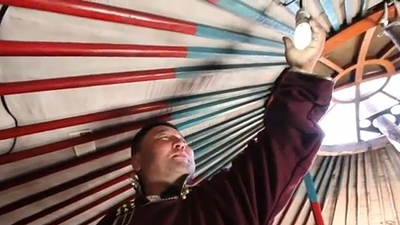Challenge
Over 1.2 billion people—just under 20 percent of the world’s population—are without access to electricity, most of them concentrated in about a dozen countries in Africa and Asia. Another 2.8 billion rely on wood, charcoal, dung and coal for cooking and heating, which results in over four million premature deaths a year due to indoor air pollution. Shortages in power supplies, and their unreliable and poor quality, due to underinvestment, are also major challenges facing developing countries. Electricity access must be reliable as well as environmentally and socially sustainable. Ensuring these depends on business models robust enough to mobilize financing, as well as policy and institutional frameworks that ensure that electricity access projects are both economically viable and sustainable from a climate perspective.
Solution
The Bank Group supports development of energy systems based on least-cost options with an emphasis on renewable sources, such as hydropower, wind, solar and geothermal, while also promoting energy efficiency. Projects support achievement of universal access to electricity and modern household fuels, as well as improved utility performance and sector governance. The Bank Group also provides financing and advice to countries on oil and natural gas extraction, production, processing, transmission and distribution.
Representative projects include support for grid expansion in India, rural electrification in Ethiopia, hydropower projects in Senegal and Cameroon, increased geothermal capacity in Kenya and Indonesia, off-grid solar home systems in Bangladesh and Mongolia, and support for off-grid lighting solutions in Africa.
Results
During 2000-13, the Bank supported projects for the construction and rehabilitation of about 98,362 kilometers of transmission and distribution lines and about 13,499 megawatts of generation capacity to improve access to reliable energy. Bank-supported programs have provided some 42 million people with new access to electricity, 17.5 million with direct access (roughly equivalent to the population of Cameroon) and 24.4 million (roughly equivalent to the population of Ghana) through inferred access (access assumed to have been created through the addition of new generation capacity).
Some examples of results achieved with IDA and IBRD-financed projects are as follows:
To extend power to India’s nearly 400 million people currently without electricity requires a massive expansion of transmission capacity. World Bank financing has helped India expand transmission across the country’s regions by 52 billion kilowatt-hours. It has also supported a five-year program from 2008-12, led by India’s Power Grid Corporation to increase its circuit by 40,000 km to reach 100,000 km, raising inter-regional electric power transfer capacity from 21 to 37 gigawatts. A $1.0 billion IBRD-financed project has supported expansion of five regional transmission systems, to enable transfer of power from energy-surplus regions to towns and villages in under-served regions. This expansion has helped to integrate the national grid, resulting in a more reliable system and reduced transmission losses.
With rising energy demand, reliance on imported fuel exposed Turkey to vulnerabilities by increasing the current account deficit as well as environmental consequences. As a result, the government developed a policy framework for attracting investments in the energy sector. As of August 2012, the Private Sector Renewable Energy and Energy Efficiency Project had supported construction of 969 megawatts of renewable energy and financed 20 energy-efficiency projects - resulting in energy savings of 1,840 tera calories (TCal) or about 1 percent of electricity consumption in Turkey in 2009. Within this portfolio, the Clean Technology Fund (CTF) financing had supported development of nine small hydroelectric power plants, as well as six wind, one geothermal, and 20 energy efficiency projects. The investments supported under the project are expected to contribute to greenhouse gas emissions reduction of 3.3 million tons per annum over the life of the project. Going forward, the World Bank Group (WBG) is preparing an energy-efficiency project aimed at promoting commercial bank lending to small and medium enterprises (SMEs) for energy-efficiency investments.
Mexico has achieved an energy efficiency milestone by distributing almost 23 million energy-saving light bulbs for free. The national program, partially financed by $185 million from the Global Environment Fund, established over 1,100 exchange points in 2011-12 at which customers replaced their incandescent bulbs with compact fluorescent lamps (CFLs). In total, more than 5.5 million Mexican families now use energy-saving lamps that consume only 20 percent of the energy and last 10 times longer than a traditional light bulb. The first stage of the program, partially financed by the World Bank, resulted in savings of 1,400 gigawatt hours (Gwh). The program also enables families to save up to 18 percent of their electric bill. When the second stage ends in 2014, it is estimated that the saving will be of 2,800 Gwh per year, preventing about 1.4 million tons of CO2 emissions.

